USS West Virginia
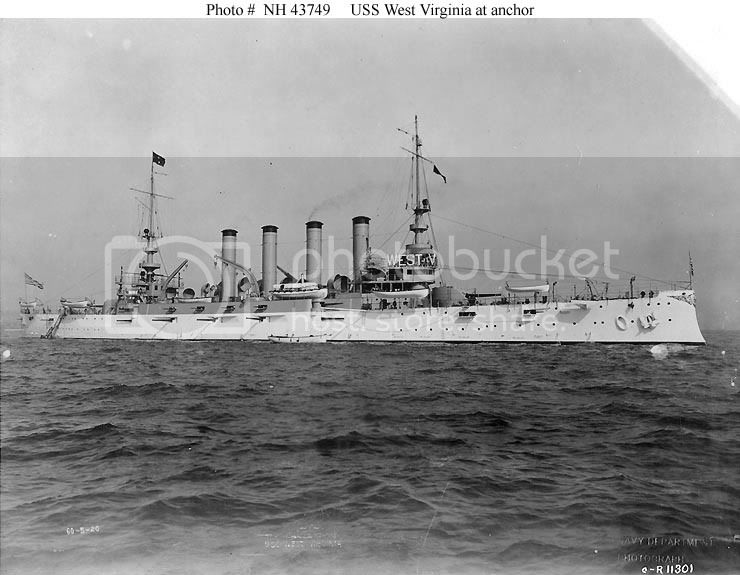
General Statistics
Displacement: 13,680 tons
Length: 504 feet
Beam: 69 6 in feet
Draft: 26 1 in feet
Speed: 22. knots
Complement: 830 officers and men
Armament: 4 x 8 inch guns
14 x 6 inch guns
18 x 3 inch guns
The first USS West Virginia (ACR-5), also referred to as "Armored Cruiser No. 5", and later renamed Huntington (CA-5), was a United States Navy Pennsylvania-class armored cruiser.
The USS West Virginia was launched on the18th of April 1903 by Newport News Shipbuilding, Newport News, Virginia, sponsored by Miss Katherine V. White, and commissioned the 23rd of February 1905, with Captain C. H. Arnold in command.
Here is a picture of the USS West Virginia underway at sea in 1918. Note her pattern camouflage, large wave breaking over her brow and coal smoke issuing from her funnels.
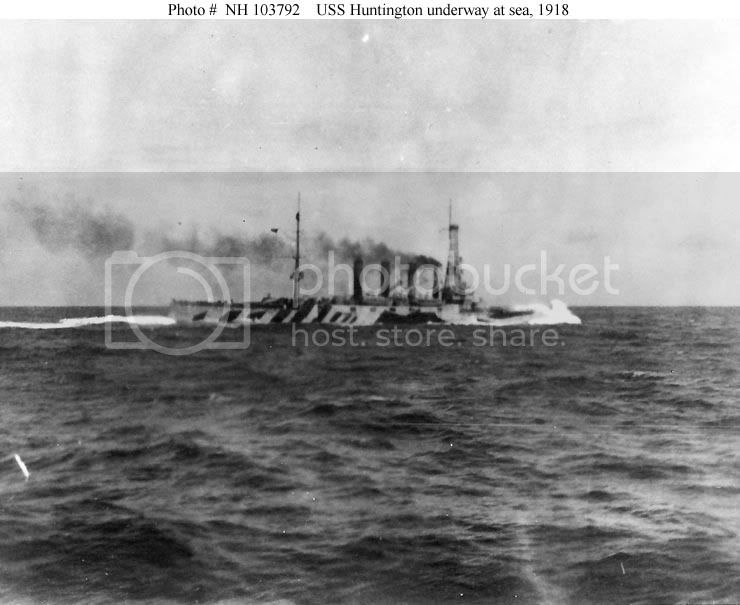
After shakedown training, West Virginia cruised with the New York Naval Militia as a unit of the U.S. Atlantic Fleet until the 30th of September 1906 when she sailed for duty with the Asiatic Squadron.
This is a picture of the USS Stewart underway in Honolulu Harbour, Hawaii circa 1908 with the USS Virginia in the background at left.
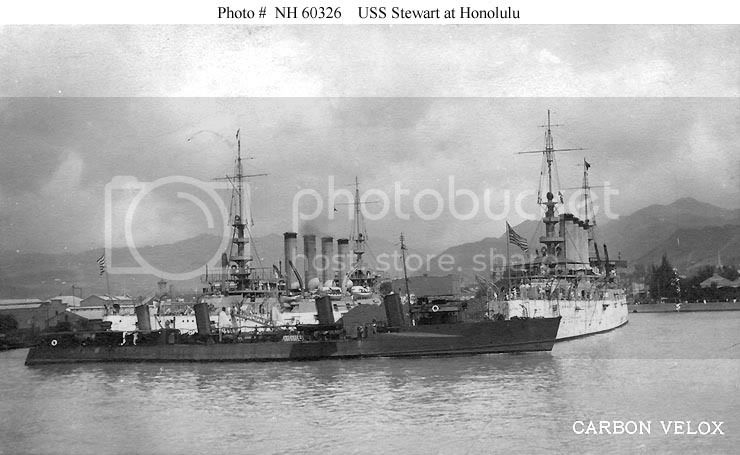
The ship remained with the Asiatic Squadron on training operations for two years, and after overhaul at Mare Island in 1908 joined the Pacific Fleet for similar exercises along the West Coast of the United States. During 1911 and 1912, she made a cruise with the Fleet to Hawaiian waters and in 1914 steamed on special duty off the west coast of Mexico for the protection of American interests. She remained off Mexico during the Veracruz crisis, and returned to Bremerton, Washington, to become a part of the Pacific Reserve Fleet.
Here is a picture of the USS Virginia shown at Mare Island on the 22nd of October 1910 after installation of caged masts.
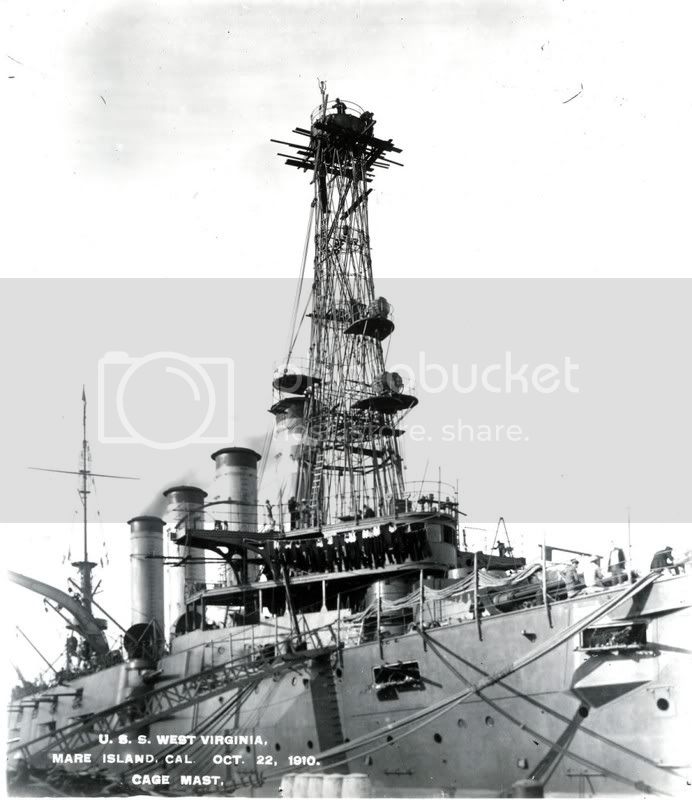
The USS West Virginia remained at Bremerton until the 20th of September 1916 when she again sailed to Mexico for the protection of American lives and property and to back up U.S. diplomacy. While on this service, she was renamed Huntington on the 11th of November to permit the assignment of her old name to a newly-authorized battleship, the West Virginia (BB-48). After, five months service off Mexico, she steamed to Mare Island for the installation of catapult devices on the quarterdeck and equipment to accommodate four seaplanes on the boat deck ways.
A picture of a Martin Thomas seaplane on fire on the ships catapult 7 June 1917.
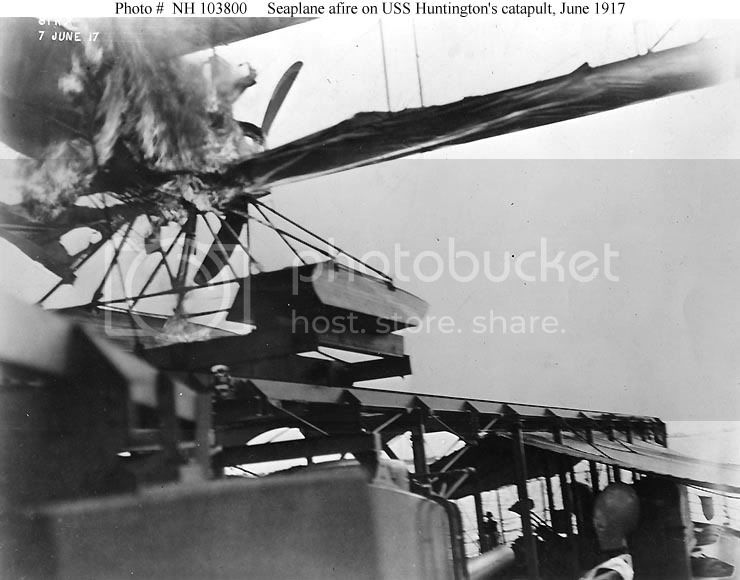
Huntington was detached from the Reserve Force and placed in full commission the 5th of April 1917. She departed Mare Island on the11th of May and steamed to Pensacola, Florida, via the Panama Canal. Detached from the Pacific Fleet after her arrival in Florida 28th of May, she spent the next two months at the Naval Air Station Pensacola, engaging in a series of important early experiments with balloons and seaplanes launched from the deck. The cruiser then sailed for Hampton Roads on the 1st of August and arrived New York five days later. There, Huntington formed with a convoy of six troopships bound for France departing 8th of September. En route, several balloon observation flights were made, and on one of these, 17th of September, the balloon was forced down by a squall and the balloonist became entangled in its rigging. Seeing the emergency, shipfitter Patrick McGunigal jumped overboard to release the pilot from the balloon basket, by then overturned and underwater. For his heroic action, McGunigal was awarded World War I’s first Medal of Honor. The day after the rescue the convoy was turned over to American destroyers in European waters; and Huntington steamed back to Hampton Roads, arriving the 30th of September.
After replenishing at Norfolk, Huntington sailed to New York 5th of October to have her catapult and seaplanes removed. She got underway on the 27th of October and arrived Halifax, Nova Scotia, 2 days later to embark on a high-level U.S. Commission to confer with the Allies. Presidential envoy, Colonel House; Admiral W. S. Benson; General T. H. Bliss; and other dignitaries took passage in Huntington, arriving Davenport, England, on November 7th, 1917, to be met by British officials. Huntington departed for New York, via Hampton Roads, arriving the 27th of November.
This is a picture of her pitching forward out of the water while steaming through heavy seas circa 1916. Note the water streaming from her hull gun casemates and top of her side armor.

Subsequently, the cruiser returned to the important duty of escorting convoys of troops and supplies to Europe, making nine such voyages to Europe and back between the 19th of February and 13th of November 1918. In addition, Huntington made three coastal convoy passages from New York to Hampton Roads. She entered Brooklyn Navy Yard on the17th of November 1918 for conversion to a troop transport.
Here is a picture that can only be described as “:Bucking the big ones” steaming through the heavy seas while transporting troops home from France 1919.
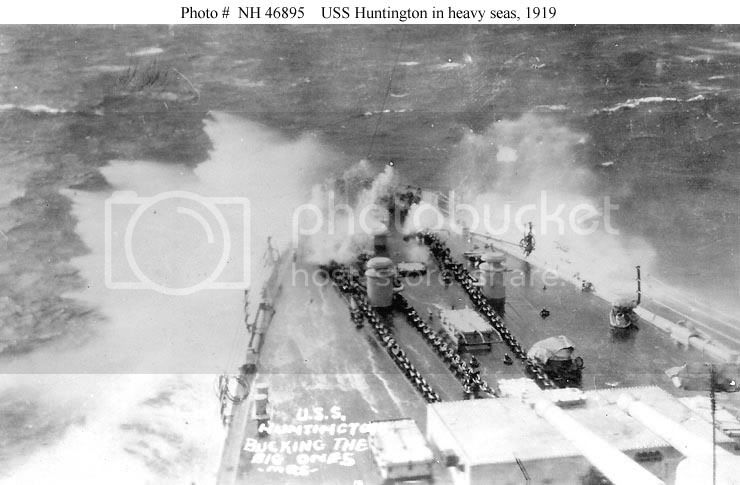
Assigned to Transport Force, Atlantic Fleet, Huntington next sailed for France to bring home veterans of the European on fighting. She departed New York the 17th of December, arrived Brest 29th of December, and brought over 1,700 passengers to New York on the 14th of January 1919. The ship made five more voyages to France and return, bringing home nearly 12,000 troops, and terminated her last voyage at Boston on the 5th of July 1919. Detached from Transport Force, she was reassigned to Cruiser Force and became flagship of Flying Squadron 1, on the 8th of July 1919. Huntington decommissioned at Portsmouth Navy Yard, Portsmouth, New Hampshire, on 1 September 1920. She was struck from the Navy List on the 12th of March 1930 and sold in accordance with the London Treaty for the reduction of naval armaments the 30th of August 1930
Cheers
Sean









